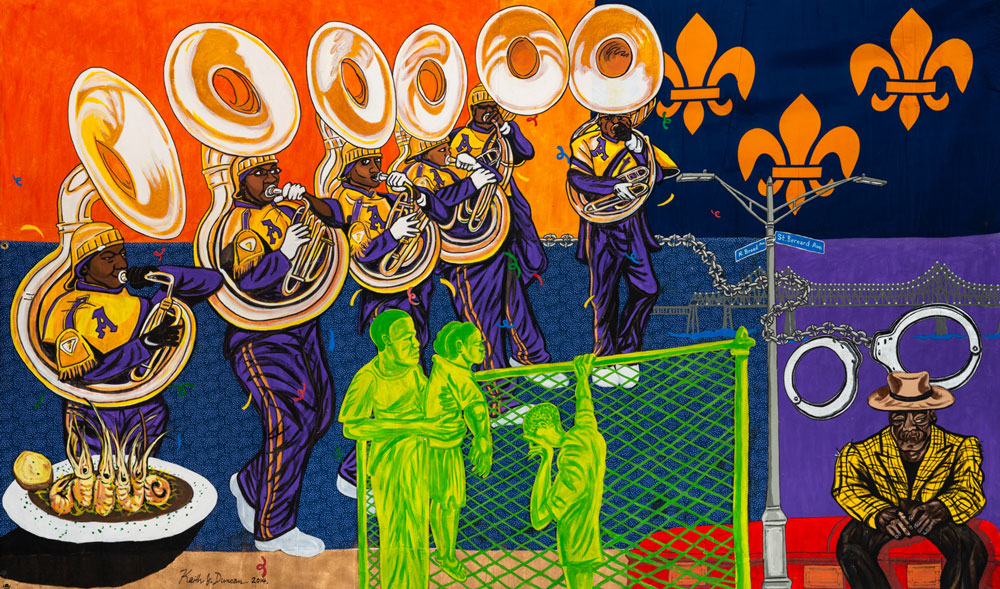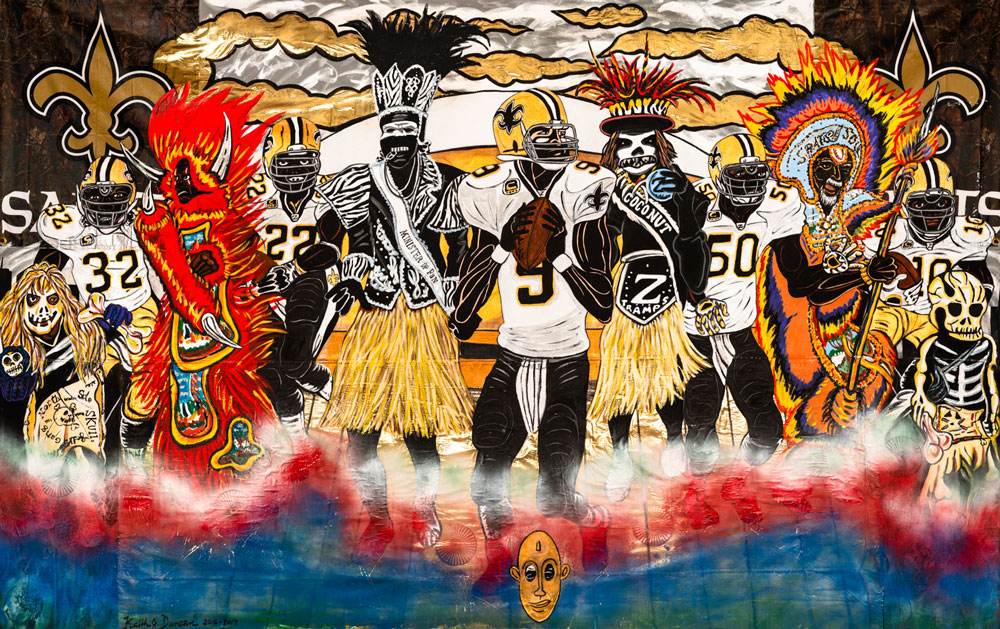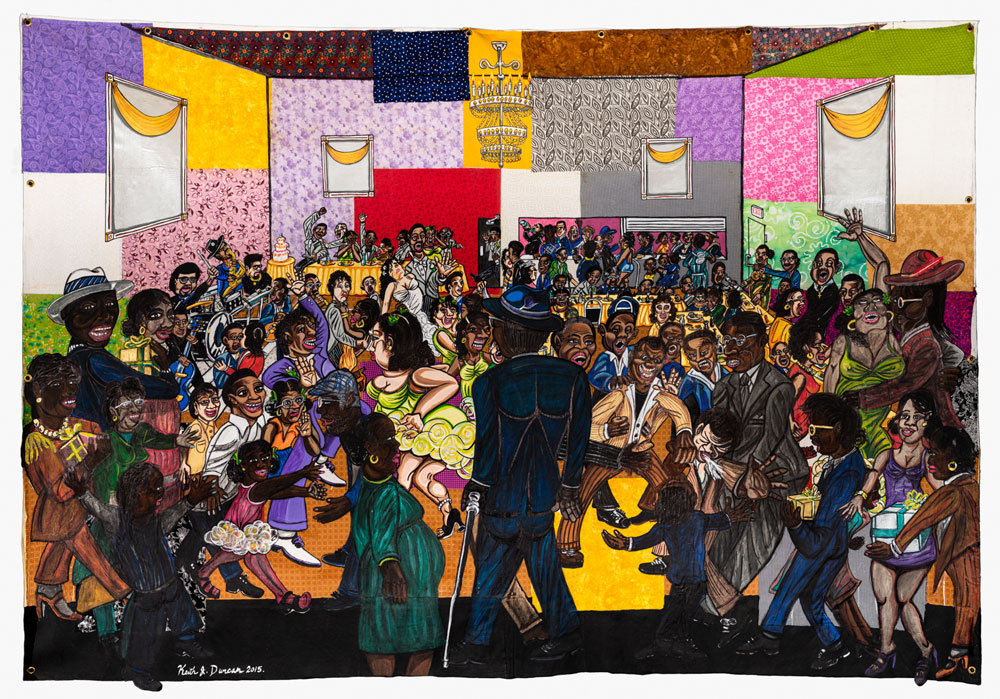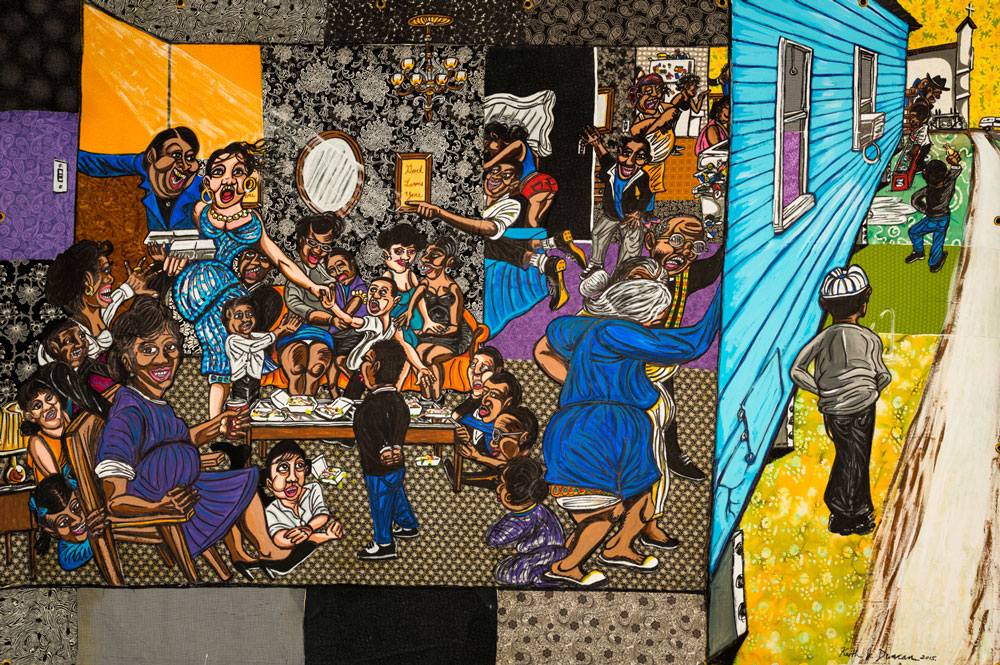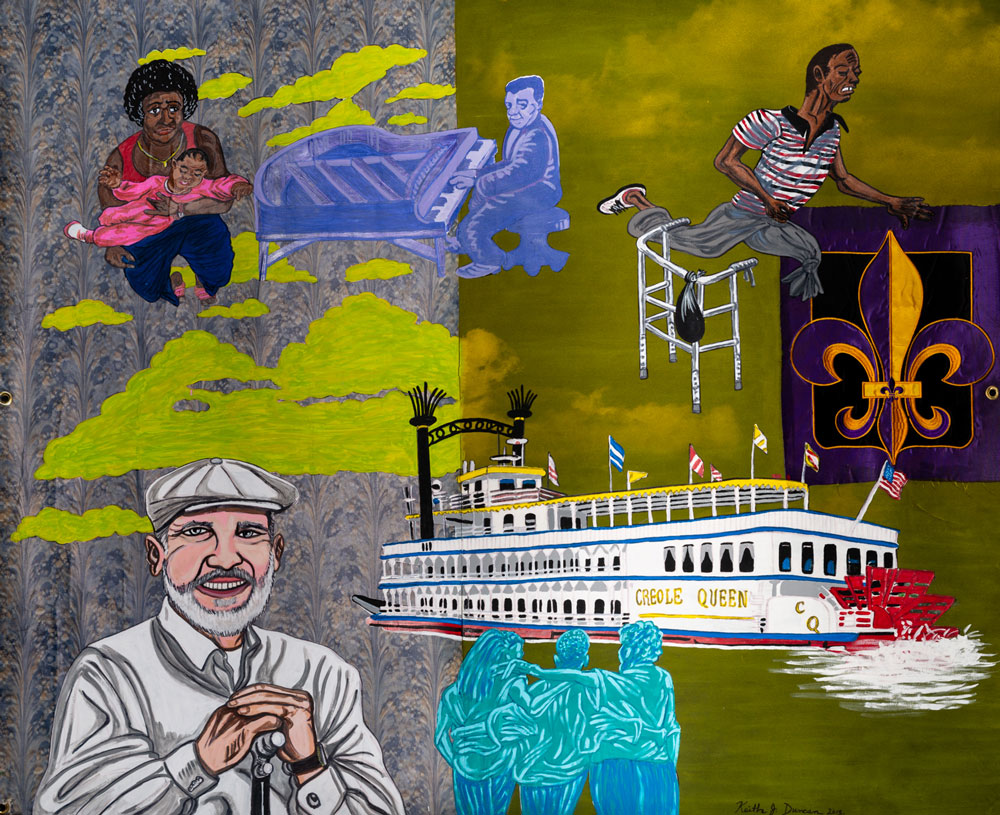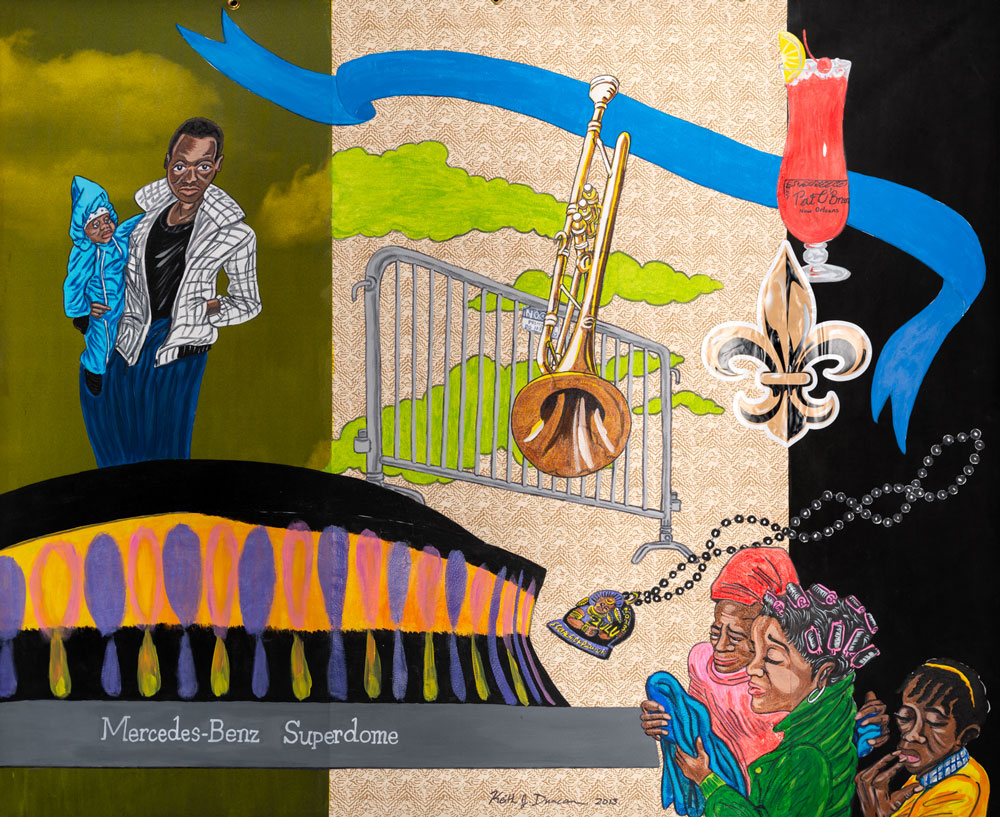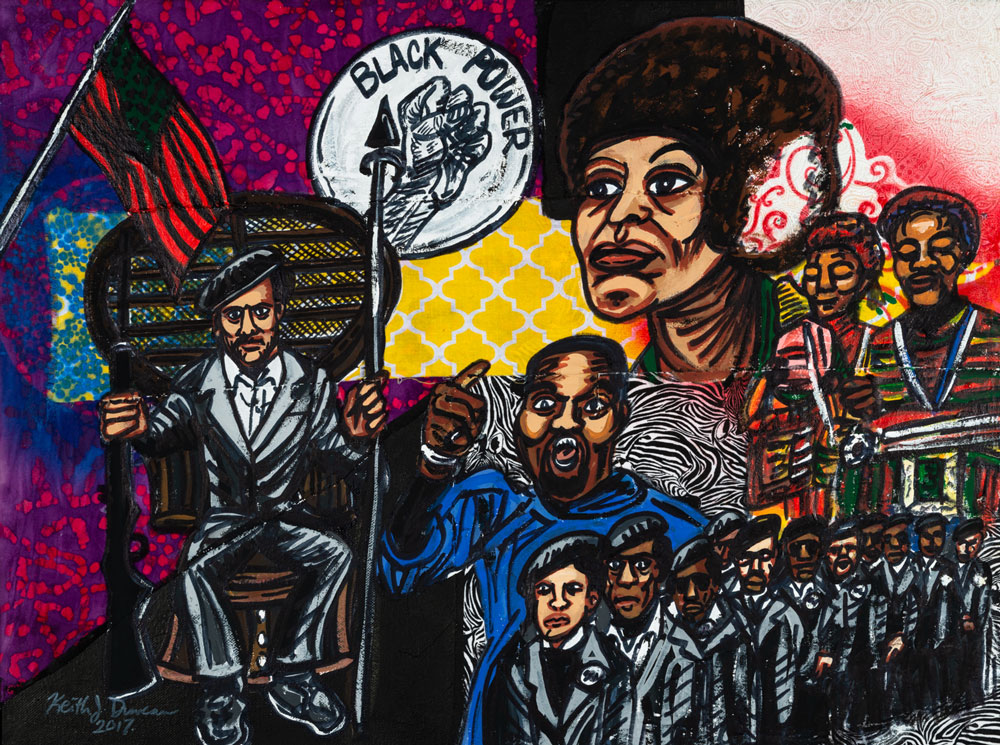ART CITIES:N.York-Keith Duncan
 Keith Duncan attended Louisiana State University before receiving a prestigious Camille Cosby fellowship that allowed him to embark on a successful 15-year career in New York where he attended Hunter College and showed his work in several exhibitions. In 2007 he returned to New Orleans. Despite the buoyancy of Duncan’s style, he’s not an artist to be taken lightly. His works are provocative social puzzles that defy easy solution.
Keith Duncan attended Louisiana State University before receiving a prestigious Camille Cosby fellowship that allowed him to embark on a successful 15-year career in New York where he attended Hunter College and showed his work in several exhibitions. In 2007 he returned to New Orleans. Despite the buoyancy of Duncan’s style, he’s not an artist to be taken lightly. His works are provocative social puzzles that defy easy solution.
By Dimitris Lempesis
Photo: Fort Gansevroot Archive
Through a blend of material, historical references, events and icons, Keith Duncan creates a multidimensional vision of the American South and more specifically New Orleans, Louisiana. Keith Duncan’s solo exhibition “The Big Easy” consists of two large-scale paintings portraying two scenes recognizable to all, “The Wedding” and “The Funeral” both part of Duncan’s series “Satire and Storytelling”. These are two scenes with curiously more similarities than differences. Through Duncan’s expressive and at times comical form of visual storytelling, one will recognize many of the familiar characters in such scenes. The wedding is not without a couple of fights, the drunk uncle, and even a fainting bride. Similar roles are filled in “The Funeral” including a separate party of men drinking outside of the reception created on the right side of the house. The bodies and heads of Duncan’s figures are as if carved from a block of wood rather than paint, resulting in hyper-expressive faces. All of Duncan’s chiseled faces can be seen at once. This rudimentary depiction of the many bodies filling the dance floor of “The Wedding” causes an effect reminiscent of procession paintings of The Renaissance, where every single figure’s face can be seen fully by the viewer, giving little importance to the depiction of a realistic point of view. In an effort to tie himself through material native to his Southern Roots, Duncan pulled inspiration from Faith Ringgold and Gee’s Bend Quiltmakers. In recent works from the past ten years, Duncan’s walls, ceilings, and surfaces have been livened by patterned fabrics. The third large-scale painting in the exhibition, titled “The Black Saints Go Marching In”, is a tribute to the first chapter of Robert Farris Thompson’s book “Flash of the Spirit”. The painting stays true to Duncan’s roots by tying in the city’s beloved football team the New Orleans Saints as the subject. Flash of the Spirit describes the influence of aesthetics of five African civilizations on the art practices of black artists today. The mask highlighted at the bottom-center of Duncan’s painting is pulled from the cover of the book. Having grown up in Plaquemines Parish and later moving to New York and then back down to New Orleans post-Hurricane Katrina, Duncan is very familiar with the effects of the hurricane both on the ground and the misunderstandings made from afar. The local newspaper following the tragedy of Hurricane Katrina described the event as if the hurricane had ripped the Mardi Gras mask off of New Orleans to reveal disaster and misfortune. This inspired Duncan’s series titled Times Picayune, the name of the city newspaper, where he illustrates the two sides of New Orleans. One side is that of celebrations, bright colors and costumes understood to define New Orleans through the eyes of tourists. The other side is that of the living reality of locals; often defined by poverty, homelessness and crime. Through a collage-like approach to these paintings, Duncan makes use of recognizable imagery seemingly pulled from brochures or tourism posters of the city. He then pairs these vibrant images with monochromatic depictions of locals often depicted in eerie colors in an effort to require the viewer to take a closer look to reveal the hardships and realities of this city. The third body of work included in the exhibition is titled, “Black Plight”. This series consists of nine small paintings of historical events divided up thematically and by time period; such as: Reconstruction Era, Civil Rights Era, and Black Star Era. The series culminates in one large painting that acts as a visual timeline highlighting moments of great progress in African American history, from slavery to the Obamas. Here also, Duncan makes use of patterned fabric as an homage to the work of the great southern women of Gee’s Bend.
Info: Fort Gansevroot, 5 Ninth Avenue, New York, Duration: 10/1-23/2/19, Days & Hours: Tue-Sat 11:00-18:00, www.fortgansevoort.com

